Naumes is a name synonymous with pears. The Naumes family, producing pears and tree fruit for generations, has adapted to change and learned to capitalize on what it does well.
Naumes, Inc., headquartered in Medford, Oregon, has used geographically diverse tree fruit operations in Oregon, California, and Washington as a way to manage crop risk and expand market reach. The company, nearly 70 years in existence, has kept pear orchards current while removing varieties and crops that no longer fit its portfolio. It has modernized its packing houses and developed marketing alliances to strengthen its market position.
The latest changes include returning to its Medford strength and exploring new opportunities in wine grapes.
Mike Naumes is president and chief executive officer of Naumes; his wife, Laura, is vice president of the vertically integrated family business. Triplet sons, Sean and Joe, 24, have recently returned to the family business after attending college, while triplet daughter, Cynthia, works in California’s Bay Area.
History
It was Mike’s grandfather Peter Naumes who brought the family to Medford. Peter followed the railroad from Chicago to the West Coast, settling in 1907 in Hood River, Oregon, to grow apples. About 20 years later, Peter relocated to Medford to grow pears.
The roots of the Naumes packing company go back to 1946 when Mike’s father, Joe, and Steve Nye started a commercial packing house called Nye and Naumes Company. Through the years, orchards were acquired, and the company eventually packed only its own fruit. In the 1960s, the Naumes family bought out Nye, and the name was eventually changed to Naumes, Inc.
At one time, several family members were involved in the business: Joe, Mike, cousin Pete Naumes, and Mike’s sister, Sue Naumes. Joe died in 1989; Pete retired about 15 years ago and has since died; and Sue has also retired. Today, Mike and Laura manage the company.
The Naumes company, most known for its pears, has been said to be one of the largest family owned and operated pear grower-packers in the world. At one time, the family farmed 7,500 acres, although not all in pears.
These days, the company has more than 2,500 acres total, with 1,700 acres planted to pears in Medford (apples have been removed), 750 acres planted to pears and apples in north central Washington near Chelan and Pateros, and 80 acres of tree fruit and a packing facility in northern California. Growing diverse crops in diverse locations spreads the risk from market fluctuations and weather-related issues.
Returning to Medford
Until just recently, Naumes was big in cherries, growing 550 acres in California. But two months ago, Naumes sold the cherries and another 1,000-plus acres of pears, peaches, and other tree fruit near Marysville, California.
They kept about 80 acres of tree fruit and their northern California packing facility called New England. The buyer plans to replace about 1,000 acres of tree fruit with kiwis, although there is a five-year agreement for Naumes to pack the cherry block for the new owner.
“We decided to pull back to Medford,” said Mike, adding that they kept the New England facility and will continue to look for outside fruit to pack there. “We’re not sure what the long-term plans are of our two boys, and I’m getting to the age of wanting to slow down. We felt that with the current strong market for farmland, we had a window of opportunity. Most agricultural businesses aren’t that liquid. With land prices being strong, it was the right time.”
The company’s number-one pear variety grown in Medford is Bosc, though they grow eight other pear varieties. “The Medford district is a really good place to grow Bosc because the climate helps the variety develop the desired russet,” Mike said, adding that Bosc has become a mainstream variety thanks to the promotion efforts of the Pear Bureau Northwest. “Here in Medford, we have a wide window to pick Bosc in terms of fruit pressure and can pick over a three- to four-week period without pressures dropping too far.”
Other pear varieties grown include Bartlett, green and red d’Anjou, Comice, Starkrimson, and specialty pears like Forelle, Seckel, and Red Comice.
Mike and Laura’s newest venture is a 15-acre wine grape vineyard planted on a steep slope below their house in Medford. Four clones of Pinot Noir were planted last August and already they have been approached by wineries interested in purchasing their grapes. Another 25 acres will be planted in the near future on a former Granny Smith apple block.
Good Fruit Grower visited the Naumes family last fall to see their Medford orchards and packing house. A tour of their pear orchards showed a variety of tree training systems—some successful and some not.
In the early 1990s, the company hired Bas van den Ende from Australia as its horticultural consultant for seven years. “We had 200 experiments going on then and did a lot of planting and different things in the orchards,” said Laura. “We were looking for that magical dwarfing rootstock and orchard system that brought pears into earlier production.”
Remnants of van den Ende’s handiwork still stand—a Tatura trellis block of pears, double rows of pears, and an orchard with 16 feet between trees, 12 feet between rows that started as an 8 by 12-feet spacing.
The Tatura trellis is effective in providing light penetration, said Mike. “But we have issues that make the system more difficult to manage. They don’t have fireblight in Australia, but we do. When you have to cut out a strike on a limb that’s attached to wires, it doesn’t work so good.”
They also tried double rows of Bosc and green and red d’Anjou as a way to increase yields. “Bosc is a vigorous variety and needs plenty of light penetration,” he said. “Fruit began growing only in the tops of the trees. We wouldn’t do double rows again.”
Then there’s the experiment using tightly spaced trees and later removing some. “That worked once we got to the point of removing the trees,” Mike said. “The 8 by 12 spacing works fine in our Comice, but in Bosc, because of its vigorous growth, we had too much shade.”
In their newer orchards, Bosc and Comice are planted together as pollinizers for each other, with two rows of Bosc and eight rows of Comice. Most of their orchards are planted to a single leader to allow closer spacings of trees.
In recent years, they’ve standardized their tree spacings, putting Comice 8 by 12 feet apart on the semidwarfing Provence quince rootstock and Bosc, a more vigorous cultivar, at 17 by 12 feet. Provence quince is widely used for Comice in Medford, but the rootstock is not winter hardy in other parts of the Northwest and it’s not compatible with some varieties. Other quince and Old Home by Farmingdale rootstocks are used on pear cultivars besides Comice.
Through the years, the Naumes company has spread its risk by expanding into new regions, new crops like cherries, and staying on top of technology. Now, as the company returns to its Medford roots, it can remain focused on its core product while exploring a new crop and industry with wine grapes. •

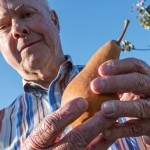

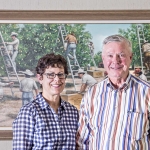
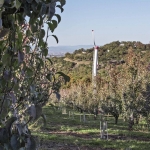
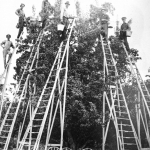
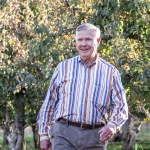
Leave A Comment